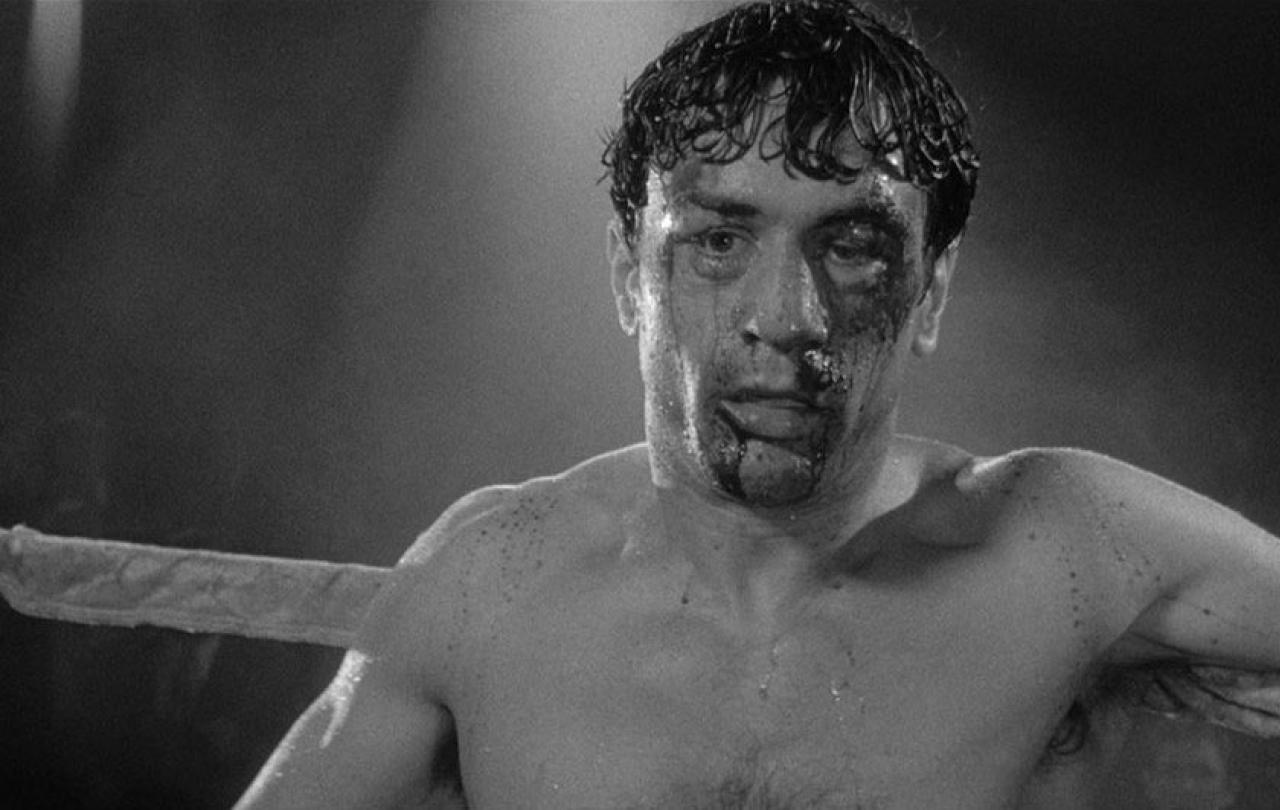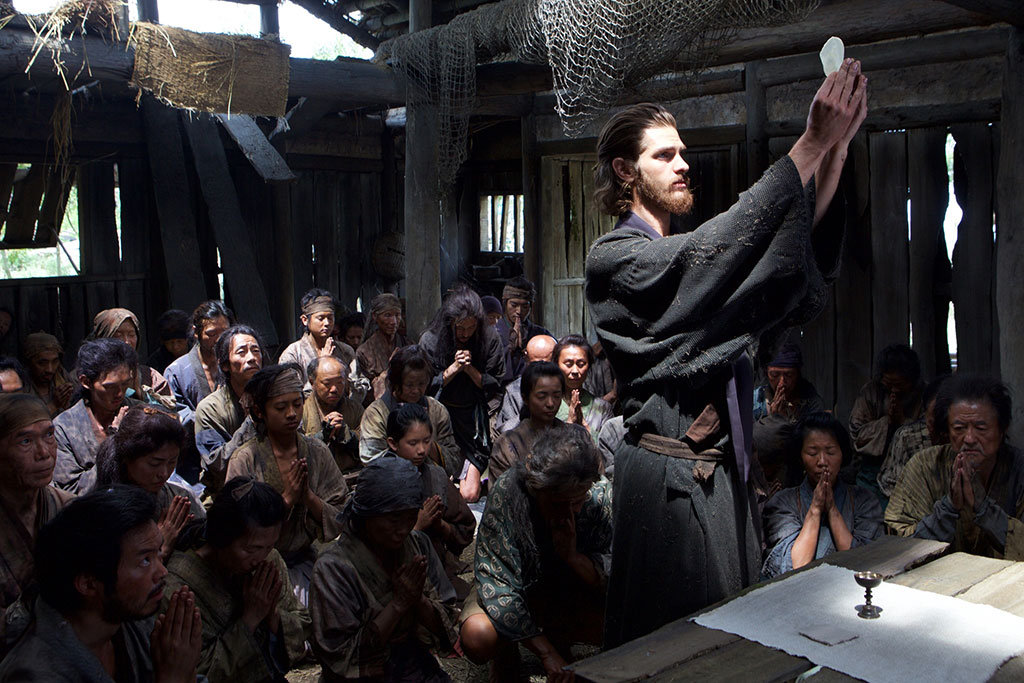
Since the release of Silence in 2016, film critics have referred to Martin Scorsese’s ‘Trilogy of Faith’; this term refers to the legendary director’s three faith-based movies, a 'trilogy' of films which was brought to a neat completion by Silence.
Or was it?
Scorsese recently announced his next project: The Life of Jesus. This will be his fourth film that sits comfortably within in the ‘faith’ category, shattering the neat theory of a trilogy of films. Not only that, this film, which will be an adaptation of a novel of the same name by author Shūsaku Endō (who also authored Silence), has officially put an end to a notion that has irked me for some time: that themes of religion and faith are exclusive to just three of Scorsese’s twenty-six films.
Into the seventh decade of his long career, it feels as though no cinematic ground has been left uncovered by Scorsese. From a children’s film about the awe-inspiring wonder and amazement that cinema offers (Hugo), to an absurdist black comedy with an unassuming philosophical sting (After Hours), to a psychodrama depicting the corrosive effects of isolation and disillusionment eerily predictive of today’s Incel culture (Taxi Driver). And then there are the films that, at least at first glance, stand in opposition to his signature mobster-epics - his aforementioned ’Trilogy of Faith’.
Even when Scorsese is telling stories completely removed from faith, he still weaves spiritual content into the fabric of his work.
Scorsese’s first foray into depicting overtly spiritual subject matter was 1988’s The Last Temptation of Christ. It sees Scorsese, and frequent collaborator and screenwriter Paul Schrader, seek to find and dissect the humanity of Jesus (played by Willem Defoe). This film dives headfirst into the complex waters of the incarnation, asking what it means for Jesus to be both fully man and fully God. Scorsese subsequently creates a portrait of Jesus as a human wrestling with the complexity and ambiguity of his own divinity.
His second ‘Faith Movie’ sees him delve into the world of Buddhism and non-violence with 1997’s Kundun. It is part history lesson, part spiritual exploration, showcasing the life of the 14th Dalai Lama. The film begins with the Dalai Lama being discovered by monks at the age of two and tracks his life as both the spiritual and political leader of Tibet, until its annexation by China and his exile to Northern India in 1959. Similarly to Last Temptation, it is within the ambiguity of a dual identity that Scorsese finds the narrative thread of the film; while Scorsese’s Jesus is caught in the tension of being both God and man, the Dalai Lama must wrestle with his identity as both the political and spiritual leader of a nation amidst a world in constant conflict.
Which brings us to the supposed culmination of Scorsese’s ‘Trilogy of Faith’: 2016’s Silence. The film, based on the novel by Shūsaku Endō, tells the story of two Catholic Portuguese missionaries in 17th Century Japan. When it comes to the setting and plot of this film, the crucial contextual detail is that, in an attempt to stamp-out peasant uprisings, Christianity has been outlawed in Japan. And yet, the film sees these two Catholic priests (played by Adam Driver and Andrew Garfield) venture into a land where Christians are being routinely tortured and executed for their faith. Their motivation for doing so is to find their mentor, Father Ferreira (Liam Neeson), who has reportedly renounced his faith. Upon their arrival, the two priests are confronted with the reality of the Japanese regime, coming face-to-face with relentless brutality and violence. And, as the narrative unfolds, they become active participants in the fate of other Christian prisoners, for whom the choice to defend or renounce their faith is a choice between life or death. As a result, we witness the priests’ personal beliefs, as well as their opinions of Father Ferreira’s decision, begin to change.
And there we have it: what the critics would have you believe is Scorsese’s ‘Trilogy of Faith’. While it is true that these are the only films that directly depict religious subject matter, this theory overlooks the constant presence of religious imagery and themes throughout his entire career. Indeed, there is more to Scorsese’s highly stylised, Rolling Stones soundtracked, bombastic gangster films than this theory would have you believe.
To fully expound the religious themes in Scorsese’s work would require an entire career retrospective: from his very first film (Who’s That Knocking at my Door – 1967), where the young Catholic boy struggles to reconcile his idealisation of the virginal purity of women with the reality of the women in his life, all the way up to his latest feature, (Killers of the Flower Moon - 2023), the third act of which is built upon notions of guilt, confession and forgiveness. Even when Scorsese is telling stories completely removed from faith, he still weaves spiritual content into the fabric of his work.
Silence, 2016.

Yet, there is one film, and one scene in particular, that I would suggest epitomises the profound influence that Christianity has had on Scorsese’s life and work; it is the closing scene of 1980’s Raging Bull, a biopic of Italian-American boxer, Jake La Motta (Robert De Niro). And you’d be forgiven for thinking that this stark film about a man who is defined by violence has no spiritual content, nor religious imagery to it. Yet, as the film draws to a close, La Motta looks at himself in a mirror and recites Marlon Brando’s famous ‘I coulda been a contender...’ monologue from On The Waterfront. And then, as the film fades to black and the only thing left for the audience to expect is the rolling of the credits, an excerpt of John’s Gospel fills the screen:
‘So, for the second time, the Pharisees summoned the man who had been born blind and said “speak the truth before God, we know this fellow is a sinner”. “Whether or not he is a sinner, I do not know”, the man replied. “All I know is this: Once I was blind and now I can see”’.
This movie, which neither centres religion nor cinema in its plot, climaxes with one of the greatest cinematic monologues, and ultimately, a Bible verse.
Why?
Because, for Scorsese, a man who flirted with entering the priesthood in his younger years and was first exposed to cinema through one of his local priests, the marriage of Catholicism and cinema have defined his life. Therefore, when it comes to work of Martin Scorsese, it would be impossible to have one without the other.
Now that Scorsese himself has explicitly moved beyond the idea of a ‘Trilogy of Faith’; perhaps the critics, and we the audience, should do the same.





